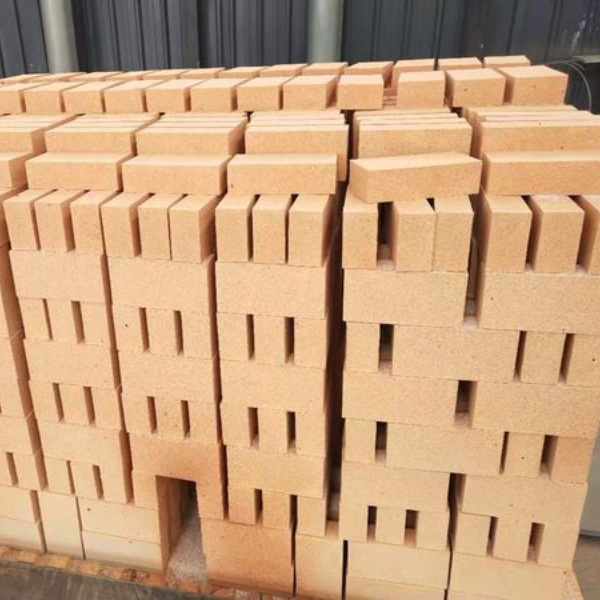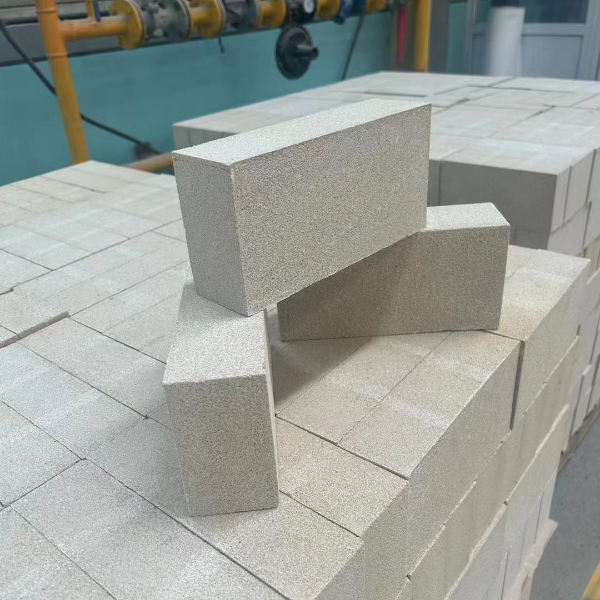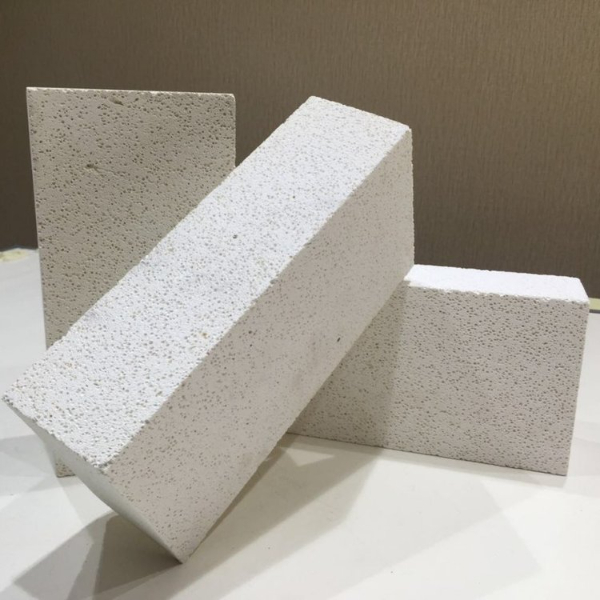¿Cuáles son los tipos de ladrillos aislantes ligeros??
Los ladrillos aislantes ligeros se refieren a productos de ladrillo refractario moldeados con una estructura porosa en el interior.. Tienen baja densidad de volumen., alta porosidad, y excelente aislamiento de alta temperatura. También se les puede llamar lightweight refractory bricks or lightweight insulation bricks.
Introduction to lightweight insulation brick
Lightweight insulation bricks are divided into many types according to the raw materials used. Por ejemplo, those made of clay, sílice, and high alumina are called lightweight clay bricks, ladrillos de sílice, y lightweight high alumina bricks.
What are the common lightweight insulation bricks?
Lightweight clay insulation brick

Lightweight clay insulation bricks refer to lightweight refractory bricks with an aluminum content of 30%-46%. Using the combustible method, they are produced using clay or light clinker and plastic clay as the main raw materials. The bulk density is 0.75-1.20g/cm3, the compressive strength is 2.0-5.9MPa, the thermal conductivity is 0.221-0.442W (m.k), the operating temperature is 1200-1400°C, and it is used in various industrial furnaces without contact with the melt. and insulation materials that are non-corrosive gases.
Lightweight high alumina insulation bricks

Lightweight high-aluminum insulation bricks refer to lightweight refractory bricks with an AL2O3 content of more than 46%. Those made of natural high alumina bauxite clinker as the main material are called ordinary lightweight high alumina bricks; those made of fused or sintered alumina as raw materials are called light corundum bricks, and the main crystal phase is mainly corundum. Lightweight high alumina bricks are usually produced by the foam method, with a volume density of 0.4-1.35g/cm3, a porosity of 66%-75%, a compressive strength of 1.3-8.1MPa, and a thermal conductivity of 0.291-0.582W (m.k) . The operating temperature of ordinary lightweight high-alumina bricks is 1350-1500°C, and they are suitable for kilns using hydrogen, CO, and other gases as protective atmospheres. The use temperature of lightweight corundum bricks reaches 1650-1800°C and can be directly exposed to the furnace lining of the flame, but it is not suitable for parts that are corrupted by molten slag.
Mullite lightweight insulation brick

Mullite lightweight insulation brick: refers to a lightweight refractory brick with an AL2O3 content of 50%-85%. It is a high-quality thermal insulation material with mullite as the main crystal phase and binding phase. The main features are high-temperature structural strength, low-temperature creep, pequeño coeficiente de expansión térmica, strong resistance to dust, y excelente resistencia al choque térmico. Depending on the aluminum content and volume density, the operating temperature is 1350-1700°C and the working layer lining of the kiln can be directly exposed to the flame.
Silica thermal insulation brick
Silica thermal insulation bricks refer to thermally insulating siliceous refractory bricks with a SIO2 content of more than 90% and a volume density of less than 1.2g/cm3. The bulk density is 0.9-1.1g/cm3, the compressive strength is 2.0-5.9MPa, the thermal conductivity is 0.35-0.42W (m.k), and the operating temperature is 1200-1500°C. It is suitable for high-temperature furnaces that do not come into contact with slag. It is used as thermal insulation material for silica brick lining of high-temperature hot blast furnaces of large blast furnaces and as thermal insulation of silica brick masonry of glass kilns.
Anorthite lightweight insulation brick
Mainly divided into two types, one is made of anorthite as the main raw material, and the other is anorthite combined light mullite bricks with anorthite binding phase as the main component (kyanite raw material needs to be added) Its characteristics are low volume density, baja conductividad térmica, buena resistencia al choque térmico, and strong resistance to reducing atmospheres. The operating temperature is 1100-1300°C. It is suitable for thermal insulation linings of hot blast furnaces, hornos de remojo, and heating furnaces in the steel industry, and various catalytic cracking furnaces in the petroleum industry.
In addition to the above commonly used lightweight insulation bricks, there are also lightweight refractory bricks suitable for alkali corrosion resistance, such as magnesia insulation bricks, magnesia-chromium insulation bricks, chromium-magnesia insulation bricks, zirconia insulation bricks, Silicon carbide lightweight insulation bricks, etc..
 Fábrica de refractarios de Rongsheng
Fábrica de refractarios de Rongsheng
WeChat
Escanea el código QR con wechat